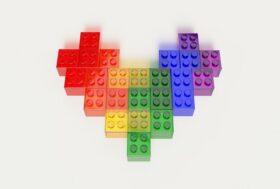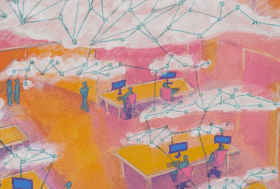The transition from primary to secondary school: Recommendations from research

This research review was produced as part of a project funded by The Comino Foundation.
The transition from primary to secondary school is often regarded as one of the most challenging periods in students’ educational careers (Zeedyk et al. 2003) and can be a particularly difficult and stressful period for some students (Kwarikunda et al., 2023). Jindal-Snape et al.’s (2020) systematic review (n=96) of the literature on primary to secondary transition in the UK and other countries concluded that transition is associated with lower educational and wellbeing outcomes, although they argue that the long-term impact of these effects is uncertain due to a lack of longitudinal studies. Recent research into secondary school transition exploring the language of secondary school, resilience and the use of Year 7 ‘bubbles’ to support transition provides important recommendations for those supporting students at this juncture in their school careers.
The language of secondary school
It has been suggested that the language of secondary school may contribute to the aforementioned academic dip (Deignan, Candarli and Oxley, 2023). Investigating the linguistic challenges faced by students as they move from primary to secondary school, Deignan et al. (2023) collected and analysed approximately two and a half million words of written and spoken data from 13 schools in the north of England. They found a central language issue that all the subjects shared was polysemy, where previously encountered vocabulary takes on new meanings at Key Stage 3. These new meanings may be very different or sometimes much more subtle. For example, in Key Stage 3 English the word ‘device’ is used to mean a literary tool such as figurative language, whereas previously the word referred to a mobile phone. The study also identified specific challenges for different subjects. For example, Key Stage 2 mathematics language is more clausal, containing more present tense verbs, adverbs and third person pronouns, whereas Key Stage 3 is typically non-clausal and contains comparatively more symbols, which is likely to be new to many students. In science, students are exposed to a significant increase in the volume of new vocabulary in Year 7, much more so than in English and mathematics.
The study also found important variations within different sub-registers of a single discipline. These sub-registers refer to the different types of written and spoken teaching material, such as lesson presentations and worksheets. In science, the sub-registers of presentations and assessments became significantly more non-narrative at Key Stage 3 than at Key Stage 2, adding a further dimension of linguistic complexity to these texts as students are required to draw inferences. Given the sheer volume of language that students encounter at secondary school, combined with the emotional demands of transition, Deignan et al. (2023) recommend that there is a need to increase awareness of the specific challenges presented by the language of secondary school. They argue that, whilst this is important for all children, it is especially important for those for whom English is not their first language, those from lower SES backgrounds and those with additional needs. Areas for vocabulary support may include:
- Undertaking baseline assessments to ascertain which words are less well known by students
- When selecting words to explicitly teach, also consider focusing on words from key topics and threshold concepts within the curriculum that have everyday meanings and academic meanings (polysemy)
- Dedicating time in lessons to explore how words are unpicked, discussed and used by students. Ideas include word building activities (e.g. matching prefixes and root words for example, ‘anti-body’ or ‘anti-matter’) and exploring common word roots (e.g. analysing the etymology of ‘photo’ (‘light’) and generating other scientific vocabulary that includes the root ‘photo’). Further ideas can be found in Recommendation 2 of the Improving literacy in secondary schools : guidance report (Quigley and Coleman, 2019).
Fostering resilience
Resilience also plays an important role during the transition to secondary school. Resilience has been defined as the capacity to adapt to difficult circumstances and thrive (McGrath and Nobel, 2011a, 2011b, 2011c). Resilience, which varies over the course of a lifetime, is a capacity that is influenced by context (Rutter, 2006). It involves the interplay between an individual’s internal strengths and external protective factors in the individual’s social environment (Rutter, 1990) such as high school and home expectations and school, peer and parent caring relations (Cem and Gul, 2018; Rutter, 1990). Kwarikunda et al.’s (2023) mixed methods study of 744 secondary students from 11 schools in Uganda found that if students experience positive peer relationships at school, they are more likely to have positive attitudes toward school, which in turn positively impacts resilience. The authors conclude that attitudes toward school and transitional activities are therefore crucial for promoting resilience. To develop students’ resilience around transition, they recommend that secondary schools cultivate a culture of high realistic expectations so that students understand the realities of secondary school life before they enter secondary school, particularly in terms of the amount of freedom that they can expect to have. Furthermore, they recommend cultivating peer connectedness and positive educational attitudes to both the school and schooling more generally. Finally, they suggest that involving parents in transitional strategies and activities throughout the first year of secondary school (rather than just a few days or a week) may help to foster students’ resilience.
Year 7 bubbles
Peer connectedness may be cultivated in many different ways, but a perhaps unexpected way in which it was found to be cultivated was through the use of Year 7 ‘bubbles’ during the COVID-19 pandemic. Saville et al.’s (2024) mixed methods study of over 400 students and teachers in England found that year group bubbles helped to smooth the process of transition for students entering secondary school. The bubbles provided a more developmentally appropriate and flexible transition for students, helping to create an environment more aligned to children’s previous primary school experience. In particular, they found that a transition supported by bubbles helped students who are yet to reach adolescence navigate the myriad social, practical, emotional and cognitive demands of a school environment designed for older students. Whilst their findings do not support a type of permanent COVID-style schooling, their study does support the need to rethink physical, administrative and pedagogical school structures to support the transition to secondary school. Specifically, they stress the need to nurture peer and teacher relationships and ensure that pre-adolescent students’ developmental needs are addressed. Some of the schools involved in the study have already adapted their practice as a result of the findings as follows:
- Designating discrete Year 7 facilities, such as one floor of a building with their own toilets, pastoral support offices and a library or sitting area that students can choose to use as they wish
- Allocating specific times, equipment and/or spaces for play with Year 7 peers to help facilitate developmentally appropriate play
- The use of Year 7 specific teachers, who are often primary trained and teach mixed attainment classes in one classroom throughout the day, to enable peer and teacher relationships to be closer to those of primary school.
Conclusion
Ultimately, as these studies suggest, transition is a multi-faceted process, influenced by social, cultural, and relational factors as well as individual pupil characteristics (Holt et al., 2022). These studies have demonstrated some concrete steps that schools can put in place to support the transition to secondary school, however it is also important for schools to consider how they might evaluate the impact of transition initiatives in their context.
Reflection questions
- How can physical, administrative and pedagogical school structures be reimagined to support the transition to secondary school for your students?
- How can you evaluate the impact of transition initiatives in your context?
References
- Cem AG and Gul A (2018) Protective factors contributing to the academic resilience of students living in poverty in Turkey. Professional School Counselling 3(1): 38–49.
- Deignan A, Candarli D and Oxley F (2023) The Linguistic Challenge of the Transition to Secondary School: A Corpus Study of Academic Language. London: Routledge.
- Holt D, Hardley S, Gray S et al. (2022) Facilitating a positive transition: A case study exploring the factors that support social, emotional and mental wellbeing from primary to secondary school. Pastoral Care in Education 41(3): 1–19.
- Jindal-Snape D, Hannah EFS, Cantali D et al. (2020) Systematic literature review of primary–secondary transitions: International research. Review of Education 8(2): 526–566.
- Kwarikunda D, Gladys N, Muwonge CM et al. (2023) Adjusting to and thriving in a new school: Role of students’ expectations, educational attitudes, and resilience during secondary school transition. International Journal of School & Educational Psychology 11(3): 259–273.
- McGrath H and Nobel T (2011a) BounceBack! Years F–2. London: Pearson Education.
- McGrath H and Nobel T (2011b) BounceBack! Years 3–4. London: Pearson Education.
- McGrath H and Nobel T (2011c) BounceBack! Years 5–6. London: Pearson Education.
- Quigley A and Coleman R (2019) Improving Literacy in Secondary Schools: Guidance Report. Education Endowment Foundation (EEF). Available at: https://educationendowmentfoundation.org.uk/education-evidence/guidance-reports/literacy-ks3-ks4 (accessed 15 April 2024).
- Rutter M (1990) Psychosocial Resilience and Protective Mechanisms. In: Rolf J, Masten AS, . Cicchetti D et al. (Ed) Risk and Protective Factors in the Development of Psychopathology. New York: Cambridge University Press, pp.181–214.
- Rutter M (2006) The Promotion of Resilience in the Face of Adversity. In: Clarke-Stewart A and Dunn J (Ed) Families count: Effects of child and adolescent development. Cambridge: Cambridge University Press, pp. 26–52.
- Saville K, Gray SL, Perryman J et al. (2024) Creating year 7 bubbles to support primary to secondary school transition: a positive pandemic outcome? Education 3-13 52(1): 48–60.
- Zeedyk SM, Gallacher J, Henderson M et al. (2003) Negotiating the transition from primary to secondary school: Perceptions of pupils, parents and teachers. School Psychology International 24(1): 67–79.










